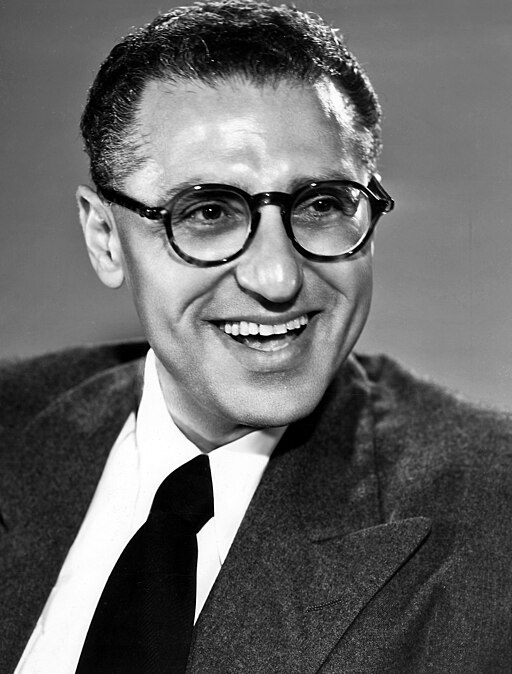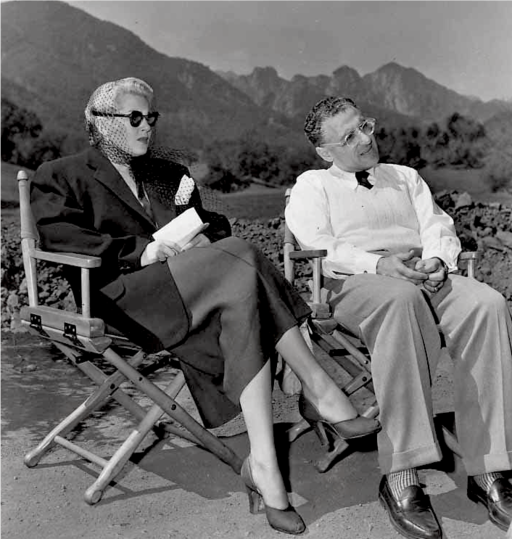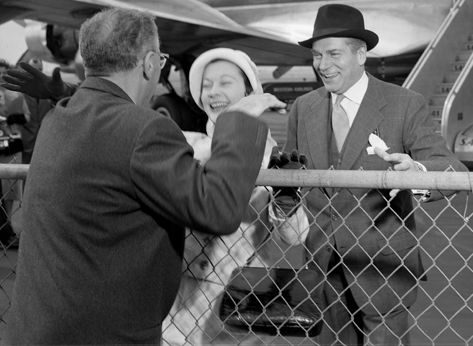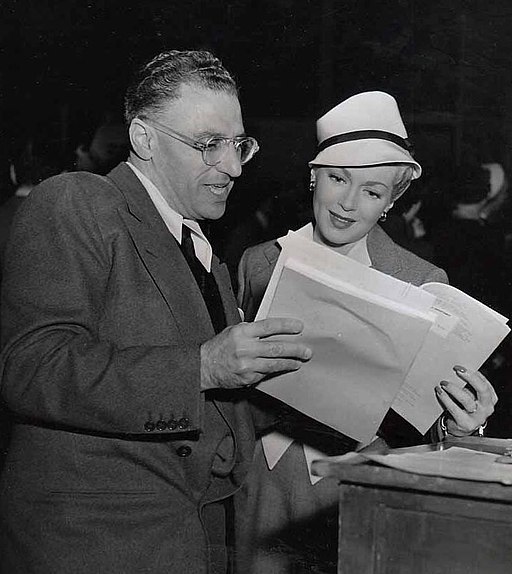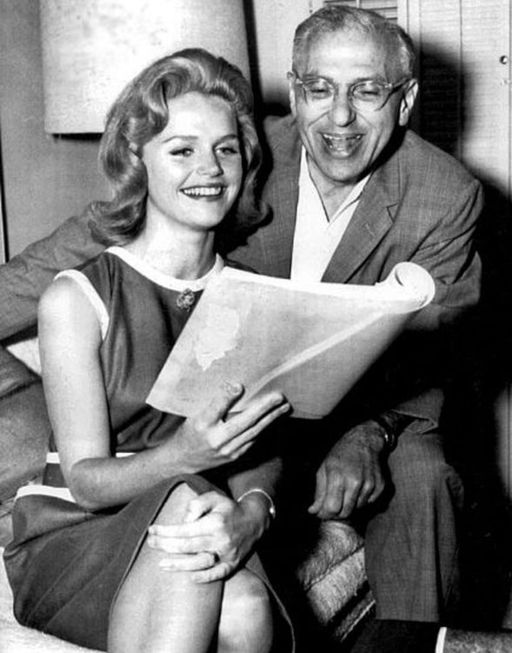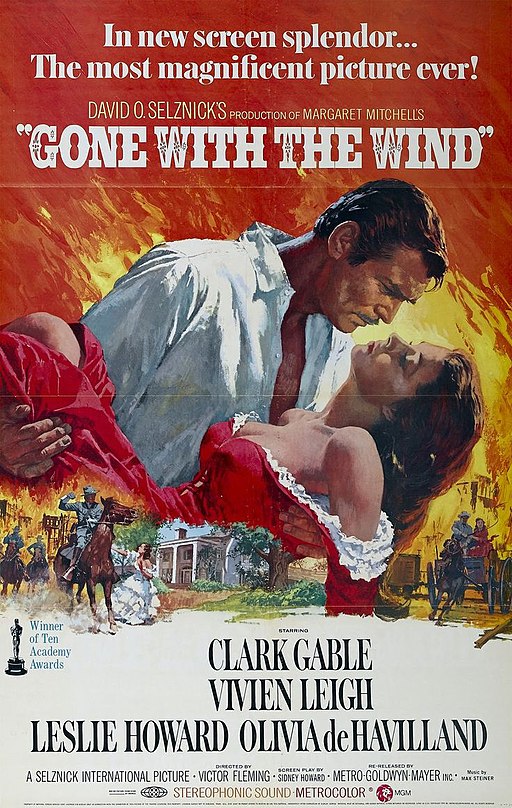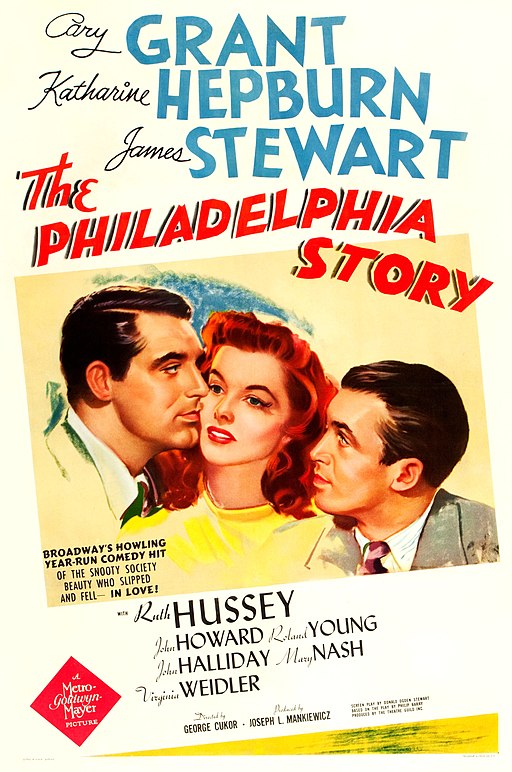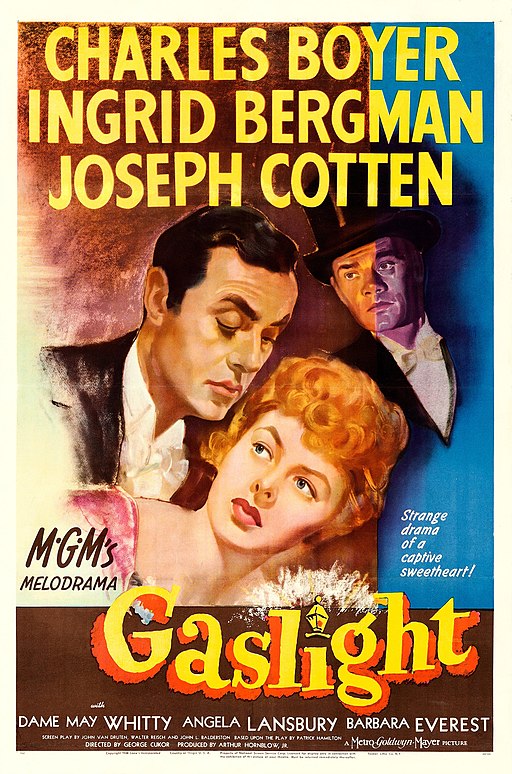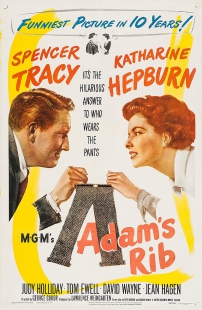George Cukor
back| Full Name | George Dewey Cukor |
| Born | July 7, 1899 |
| Birthplace | New York City, New York, U.S. |
| Died | January 24, 1983 |
| Buried | Forest Lawn Memorial Park, Glendale, California, U.S. |
| Married to | Never married |
| Children | None |
| Notable films | Little Women (1933) - David Copperfield (1935) - Camille (1936) - The Philadelphia Story (1940) - Gaslight (1944) - Adam's Rib (1949) - Born Yesterday (1950) - A Star is Born (1954) - My Fair Lady (1964) |
George Cukor
The Women’s Director
George Cukor made a name for himself in Hollywood with his skill in directing actresses, earning him the nickname "the women's director." However, his talents were diverse, and he worked on a wide range of genres. His collaboration with some of the biggest stars of the time, like Greta Garbo, Katharine Hepburn, and Spencer Tracy, produced several cinematic classics.
Cukor's style was marked by a fluid use of the camera, a keen sense for dramatic and comedic timing, and an ability to get the best performances out of his actors. He was particularly adept at adapting plays and literary works for the screen, bringing a distinct sensibility that bridged the theatrical and cinematic worlds.
Related
George Cukor (1899 – 1983)
Detailed Biography
George Dewey Cukor was born on July 7, 1899, in the Lower East Side of Manhattan, New York City. He was the youngest of four children in a Hungarian-Jewish family. His father, Victor Cukor, was a lawyer, and his mother, Helena Ilona Gross, was a politically active woman with a strong influence on young George. From an early age, Cukor was drawn to the theater and the emerging world of cinema, which was rapidly evolving in New York City.
Career Beginnings
Cukor's career began in the theater. He worked in various capacities, from stagehand to stage manager, and eventually as a Broadway director. His theater work provided him with a deep understanding of actors and their craft, which would become a hallmark of his later film work. Cukor transitioned to Hollywood in the late 1920s, just as the film industry was undergoing the seismic shift from silent films to talkies.
Hollywood Success
In Hollywood, Cukor quickly established himself as a director with an exceptional ability to handle dialogue and actors. He worked for several studios, including Paramount and RKO, before finding long-term success at Metro-Goldwyn-Mayer (MGM). Cukor directed some of MGM's biggest stars, including Greta Garbo, Joan Crawford, and Katharine Hepburn.
Signature Style and Major Works
Cukor's style was marked by his elegant direction, sharp wit, and a focus on character-driven stories. He was particularly adept at directing women, earning him the nickname "the women's director." However, this moniker belied his versatility in handling a wide range of genres. Some of his most notable films include "The Philadelphia Story," "Gaslight," "Adam's Rib," and the musical "My Fair Lady," for which he won an Academy Award for Best Director.
Personal Life
Cukor's personal life was both rich and complex. He was known for his sophistication, charm, and wit, qualities that made him a beloved figure in Hollywood social circles. Cukor was discreet about his private life, particularly regarding his homosexuality, which was an open secret in Hollywood but not publicly acknowledged during his lifetime. He never married nor had children, and his home in Hollywood became a famous gathering place for social events and parties.
Later Years and Legacy
Cukor continued to work into the 1970s, adapting to the changing landscape of Hollywood. He passed away on January 24, 1983, leaving behind a legacy as one of Hollywood's most accomplished and respected directors. His influence extended beyond his films; he was a mentor to many in the industry and a trailblazer in the art of cinema.
A Short Overview of George Cukor's Impact on Cinema:
Analysis of George Cukor’s Directing Style:
George Cukor's directing style is celebrated for its elegance, sophistication, and a deep understanding of character and narrative, making him one of the most respected filmmakers in Hollywood's Golden Age. Here's an analysis of key aspects of his style:
- Actor's Director: Cukor was renowned for his ability to work with actors, earning him the nickname "the women's director." This title, while somewhat reductive, highlights his skill in eliciting nuanced, powerful performances, particularly from female leads.
- Character-Driven Stories: His films often focused on character development over plot, with a keen interest in the psychological depth and emotional complexity of his characters.
- Elegant Visuals: Cukor's films are marked by their visual elegance. He had a classic Hollywood style that favored continuity editing and unobtrusive camerawork, allowing the performances and script to take center stage.
- Staging and Composition: He was adept at staging scenes in a way that revealed character relationships and dynamics, often using sophisticated mise-en-scène to enhance the narrative.
- Master of Adaptation: Many of Cukor's most acclaimed films were adaptations of plays or novels. He had a talent for translating these works to the screen, maintaining their essence while making them cinematic.
- Sharp, Witty Dialogue: Cukor had a flair for handling dialogue-heavy scripts, allowing for rapid-fire exchanges and witty repartee, which became a hallmark of many of his films.
- Diverse Genres: While known for his comedies and women-centric dramas, Cukor's repertoire included a wide range of genres, from musicals ("My Fair Lady") to thrillers ("Gaslight") and literary adaptations ("David Copperfield").
- Working with Writers and Crew: Cukor was known for his collaborative approach, working closely with screenwriters, cinematographers, and other crew members to achieve a unified vision for his films.
- Influential in Film Acting: Cukor's emphasis on performance influenced the way acting was approached in American cinema. He guided actors to deliver more natural, nuanced performances that differed from the theatrical style prevalent in early sound films.
- Mentorship: He also played a mentorship role for many actors and filmmakers, leaving a lasting impact on the industry.
Cukor's directing style reflects a balance between the artistic and commercial aspects of filmmaking. His films are characterized by their refined craftsmanship, narrative intelligence, and a deep empathy for his characters.
Awards and Recognition:
Academy Awards (Oscars)
- Best Director Win:
- 1964: "My Fair Lady"
- Best Director Nominations:
- 1933: "Little Women"
- 1941: "The Philadelphia Story"
- 1948: "A Double Life"
- 1951: "Born Yesterday"
- 1955: "A Star Is Born"
Golden Globe Awards
- Best Director Win:
- 1965: "My Fair Lady"
- Best Director Nominations:
- 1953: "Pat and Mike"
- 1955: "A Star Is Born"
- 1958: "Les Girls"
- 1960: "Wild Is the Wind"
Directors Guild of America (DGA) Awards
- Outstanding Directorial Achievement in Motion Pictures Win:
- 1965: "My Fair Lady"
- Lifetime Achievement Award:
- 1981: D.W. Griffith Award for Lifetime Achievement
Other Honors and Recognitions
- Venice Film Festival:
- 1964: "My Fair Lady" – International Award
- Berlin International Film Festival:
- 1957: "Bhowani Junction" – Golden Bear nomination
- David di Donatello Awards:
- 1965: "My Fair Lady" – Best Foreign Production
- Laurel Awards:
- 1965: "My Fair Lady" – Golden Laurel for Top Director
- New York Film Critics Circle Awards:
- 1940: "The Philadelphia Story" – Best Director
- Honorary César Award:
- 1976: For his contributions to cinema
Posthumous Honors
After his passing, Cukor continued to be recognized for his contributions to film:
- Various film societies and festivals have held retrospectives and tributes to his work.
- His films, particularly "My Fair Lady," "The Philadelphia Story," and "A Star Is Born," continue to be celebrated in film history and receive accolades from contemporary critics and filmmakers.
George Cukor's awards and nominations underscore his stature as one of the leading directors of Hollywood's Golden Age, renowned for his artistic vision, his skill in working with actors, and his contributions to the craft of filmmaking.
Memorable Quotes from George Cukor:
George Cukor, known for his wit and insight both in his films and personal life, left behind several memorable quotes that reflect his philosophy on filmmaking, acting, and Hollywood. Here are some notable ones:
-
On Directing Actors:
"I never felt I had the right to say to an actor, 'Do it my way or else.' I always felt there's something in him that's going to do it better than if I just impose my will."
-
On the Art of Cinema:
"I think the motion picture is one of the great all-time human adventures."
-
On Storytelling:
"Style must never be overdone! But it must be strong enough to support the story in a subtle way."
-
On Hollywood:
"In Hollywood, you had to keep fighting for quality against a purely commercial point of view."
-
On Actors and Characters:
"What I've learned is that a famous actor is just as nervous and unsure as an actor with no reputation at all. And this is a great comfort."
-
On the Role of a Director:
"A director is a kind of idea and taste machine; a movie is a series of creative and technical decisions, and it's the director's job to make the right decisions as frequently as possible."
-
On Film Adaptations:
"The more the film is like the book, the worse the film."
On the Evolution of Film:
"The history of the cinema is the history of editing."
The impact of “My Fair Lady”:
"My Fair Lady" holds a special place in George Cukor's career for several significant reasons:
- Academy Award Win: The film earned Cukor his only Oscar win for Best Director in 1965. This recognition came after several nominations throughout his career, marking a pinnacle of professional achievement.
- Commercial and Critical Success: "My Fair Lady" was both a commercial and critical success. It showcased Cukor's directorial finesse and affirmed his status as a top-tier director in Hollywood.
- Mastery of Adaptation: Cukor's success with "My Fair Lady" underscored his mastery in adapting stage plays to the screen. The film was based on the musical of the same name, which in turn was adapted from George Bernard Shaw's play "Pygmalion." Cukor managed to retain the essence of the original works while adding cinematic flair.
- Visual and Musical Elegance: The film is renowned for its lavish set design, elegant costumes, and memorable musical numbers, aligning with Cukor's reputation for sophisticated and stylish filmmaking.
- Past Disappointment with "Gone with the Wind": Cukor had been famously replaced as the director of "Gone with the Wind." "My Fair Lady" presented an opportunity to helm another major literary adaptation, this time seeing it through to completion and great acclaim.
- Technical Challenges: The film's intricate production and the challenge of translating a beloved stage musical to the screen tested Cukor's directorial skills. His ability to navigate these challenges was a testament to his experience and expertise.
- Fulfillment of Artistic Vision: "My Fair Lady" allowed Cukor to fully utilize his strengths in character development, narrative pacing, and managing complex productions, culminating in a work that was both artistically satisfying and widely applauded.
- Enduring Influence: The film remains a classic, often cited for its direction, performance, and production values. It continues to influence musical cinema and is a testament to Cukor's enduring impact on the film industry.
Movies Directed by George Cukor:
1930s
- 1930: "Grumpy" - A mystery drama about an old lawyer with a bad temper who gets involved in solving a case.
- 1930: "The Royal Family of Broadway" - A comedy-drama about a theatrical family challenged by the promise of Hollywood.
- 1931: "Tarnished Lady" - A woman sacrifices love for wealth and suffers the consequences.
- 1931: "Girls About Town" - Two gold diggers use their charms to extract money from rich men.
- 1932: "What Price Hollywood?" - A waitress-turned-actress and her relationship with an alcoholic director.
- 1932: "A Bill of Divorcement" - A drama about a man returning home after recovering from mental illness.
- 1933: "Rockabye" - A play actress adopts an orphan, complicating her personal and professional life.
- 1933: "Our Betters" - An American woman marries a British nobleman, entering a world of deceit.
- 1933: "Dinner at Eight" - A comedy-drama about high society characters intersecting at a dinner party.
- 1933: "Little Women" - Adaptation of Louisa May Alcott's novel about four sisters growing up during the Civil War.
- 1934: "David Copperfield" - A film adaptation of Charles Dickens' novel about a young boy's journey to manhood.
- 1935: "Sylvia Scarlett" - A young woman disguises herself as a boy to escape her past.
- 1935: "No More Ladies" (uncredited) - A romantic comedy about marital fidelity.
- 1936: "Romeo and Juliet" - Shakespeare's tragic romance set in Renaissance Verona.
- 1936: "Camille" - A romantic drama about a courtesan falling in love with a young man.
- 1938: "Holiday" - A man falls in love with his fiancée's free-spirited sister.
- 1939: "Zaza" - A Parisian singer becomes entangled in a love affair.
1940s
- 1940: "Susan and God" - A woman's newfound religious fervor challenges her social life and family.
- 1940: "The Philadelphia Story" - A socialite's wedding plans are complicated by her ex-husband and a tabloid journalist.
- 1941: "A Woman's Face" - A woman with a disfigured face is given a chance for revenge and redemption.
- 1941: "Two-Faced Woman" - A woman pretends to be her own twin sister to win back her husband.
- 1942: "Her Cardboard Lover" - A comedic love triangle involving a woman, her lover, and a hired decoy.
- 1944: "Gaslight" - A thriller about a woman whose husband slowly manipulates her into believing she is going insane.
- 1947: "Desire Me" - A romantic drama about a woman torn between her missing husband and his best friend.
- 1947: "A Double Life" - An actor's portrayal of Othello begins to mirror his life in a dangerous way.
- 1949: "Edward, My Son" - A father's excessive love for his son leads to moral degradation.
- 1949: "Adam's Rib" - A courtroom comedy where husband and wife lawyers face off in a legal battle.
1950s
- 1950: "Born Yesterday" - A corrupt businessman hires a journalist to educate his girlfriend, leading to unexpected complications.
- 1950: "A Life of Her Own" - A model in New York City struggles with the demands of her career and love life.
- 1951: "The Model and the Marriage Broker" - A romantic comedy about a marriage broker meddling in her clients' lives.
- 1952: "Pat and Mike" - A sports promoter helps a multi-talented woman athlete, leading to mutual attraction.
- 1952: "The Marrying Kind" - A couple's marriage problems are recounted in flashbacks during divorce proceedings.
- 1953: "It Should Happen to You" - A woman becomes famous after putting her name on a billboard in New York City.
- 1954: "A Star Is Born" - A film star helps a young singer and actress find fame, even as age and alcoholism send his own career into a downward spiral.
- 1956: "Bhowani Junction" - A drama set in India during the end of the British Raj, focusing on the identity crisis of Anglo-Indian women.
- 1957: "Les Girls" - A musical comedy about a libel lawsuit involving former members of a dance troupe.
- 1957: "Wild Is the Wind" - A love triangle develops on a Nevada ranch between a rancher, his bride, and his brother.
1960s
- 1960: "Let's Make Love" - A billionaire joins a theater troupe to be near a woman he admires.
- 1960: "Song Without End" (uncredited) - A biographical film about the composer and pianist Franz Liszt.
- 1962: "Something's Got to Give" (unfinished) - A romantic comedy that was Marilyn Monroe's last film project.
- 1964: "My Fair Lady" - A phonetics professor makes a bet that he can train a flower girl to pass as a high-society lady.
- 1969: "Justine" - A drama set in Egypt before WWII, centered around a mysterious woman.
1970s and 1980s
- 1972: "Travels with My Aunt" - An adventure comedy about a retired bank manager and his eccentric aunt.
- 1975: "Love Among the Ruins" - A romantic television film about a barrister and his former lover who is now accused of breach of promise.
- 1976: "The Blue Bird" - A fantasy film about two children's journey to find the bluebird of happiness.
- 1981: "Rich and Famous" - A drama about two friends who face personal and professional challenges over the years.
Notable Collaborations and Uncredited Work
- 1932: "One Hour with You" (uncredited) - Cukor contributed to this musical comedy but did not receive official credit.
- 1934: "Manhattan Melodrama" (uncredited) - He worked on this crime drama but was uncredited.
- 1939: "Gone with the Wind" (uncredited) - Cukor initially directed this epic historical romance but was replaced early in the production.
- 1949: "The Actress" - A film about a teenager's ambition to become an actress, based on Ruth Gordon's autobiographical play.
- 1954: "Bhowani Junction" - A drama set in post-war India, examining issues of race, identity, and colonialism.

